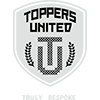 The Punjab State Commission for Protection of Child Rights recently summoned officials of the education department. The concerns listed in the supply of uniforms to students of government schools were: (Ref: https://timesofindia.indiatimes.com/city/chandigarh/school-uniforms-child-rights-panel-summons-education-officials/articleshow/69169332.cms)
The Punjab State Commission for Protection of Child Rights recently summoned officials of the education department. The concerns listed in the supply of uniforms to students of government schools were: (Ref: https://timesofindia.indiatimes.com/city/chandigarh/school-uniforms-child-rights-panel-summons-education-officials/articleshow/69169332.cms)
- Sub-standard and wrong-sized uniforms
- Stitched at wholesale rate without taking physical measurements of students
- Increased rate of uniforms from INR 400 to INR 600
- Winter uniforms supplied in the first week of April after the winter season was over
All the block-level officers were directed to collect uniforms of wrong size from schools in their respective areas and replace them with the correct ones.
In four words QUALITY, SIZE, PRICE, TIMING resulting in WASTAGE & COST OVERRUNS of school uniforms.
Without going into the details of this instance the challenges are quite generic and are faced by private schools in dealing with much smaller scales.
-
QUALITY : Good quality uniforms
-
SIZE : Good fits for all
-
PRICE : Appropriate price
-
TIMING : On time availability
The solution off-course is good planning as anyone would say, but below is our short note on the planning.
1. QUALITY: The quality of a garment can be broadly broken down into 2 components the material used and the finish. A quality material is one that is functional and has been manufactured in a safe and sustainable manner for personal use. One could also note that it must be durable to handle the rough & tumble of a school child’s lifestyle and with colours that can handle regular wash. For this one needs to find a manufacturer who is able to provide the appropriate samples for testing. And is also able to meet with regular quality tests. Schools on their part must definitely do the initial sample testing. A review of the support chain of the supplier should be a good indication of their ability to continue to meet the demands expected of them
2. SIZE: Good fits for all
It is difficult to manufacture to measurements of individual sizes. If one is to leverage economies of scale then the standardisation of sizes is a must. Most readymade apparel in the market is of standard sizes so there is no reason school supplier is not be able to work on this. At the initial stage the onus should be on the school administration to collect current sizes of children. The extrapolation of demand for future sizes can be co-managed by the supplier. To ensure that the children get clothes their size the parents should be able to interact directly with the supplier/retailer through an ecommerce model. The supplier could also be flexible to make adjustments on size somewhat akin to the fashion ecommerce models today where one is able to return items based on size considerations. The other option is to have sample sets of all sizes in schools where parents can have their children select appropriate sizes before ordering them.
3. PRICE: Appropriate price
This is slightly tricky as one is always faced with the dilemma “quality comes at a price”. However, with the right planning, design and sourcing one could nearly match the prices of the cheaper items. The negotiating power /volume that the school can also play an integral role in the final price. Elements of the uniform can be designed to minimize the escalation in cost. It is a partnership that a school and supplier must enter into, it is their commitment to all of the above mentioned salient points that can dictate the ability to meet the requirements.
4. TIMING : On time availability
Planning! As with everything a well planned project is likely a well executed and successful project. Getting the designs right and placing the orders / agreements for uniforms must be done well in time. This is also to allow for other unknown contingencies. The agreements must have clearly defined commitments to allow for timely actions if there is absence of adherence to plan. Another element of timing is the consistency of the partnership. The longer term the agreement whether documented or in spirit will lead to greater commitment of the partner. Similar to quality, the ability of the supply partner to meet timely demands is a review of the other partnerships / support chain of the supplier. Their longevity and commitment is a fair indicator of their ability to meet these demands.
These items if covered well will result in timely availability of uniforms at appropriate costs. The participation of the stakeholders in such a planning exercise will also prevent wastage and a successful outcome for all. A healthy partnership will yield satisfactory stakeholders and a healthy school system.
Design, another element of school uniform and ethos, shall be covered by us on another occasion.

